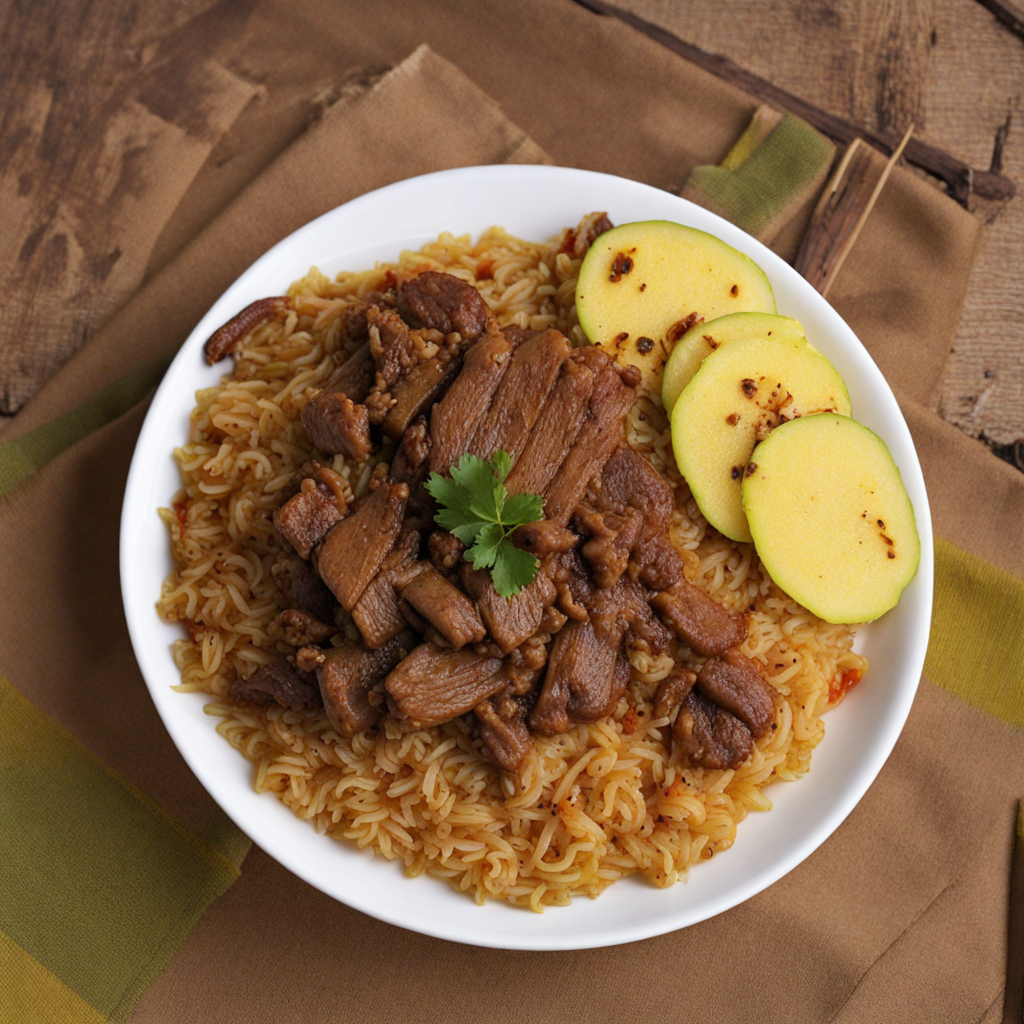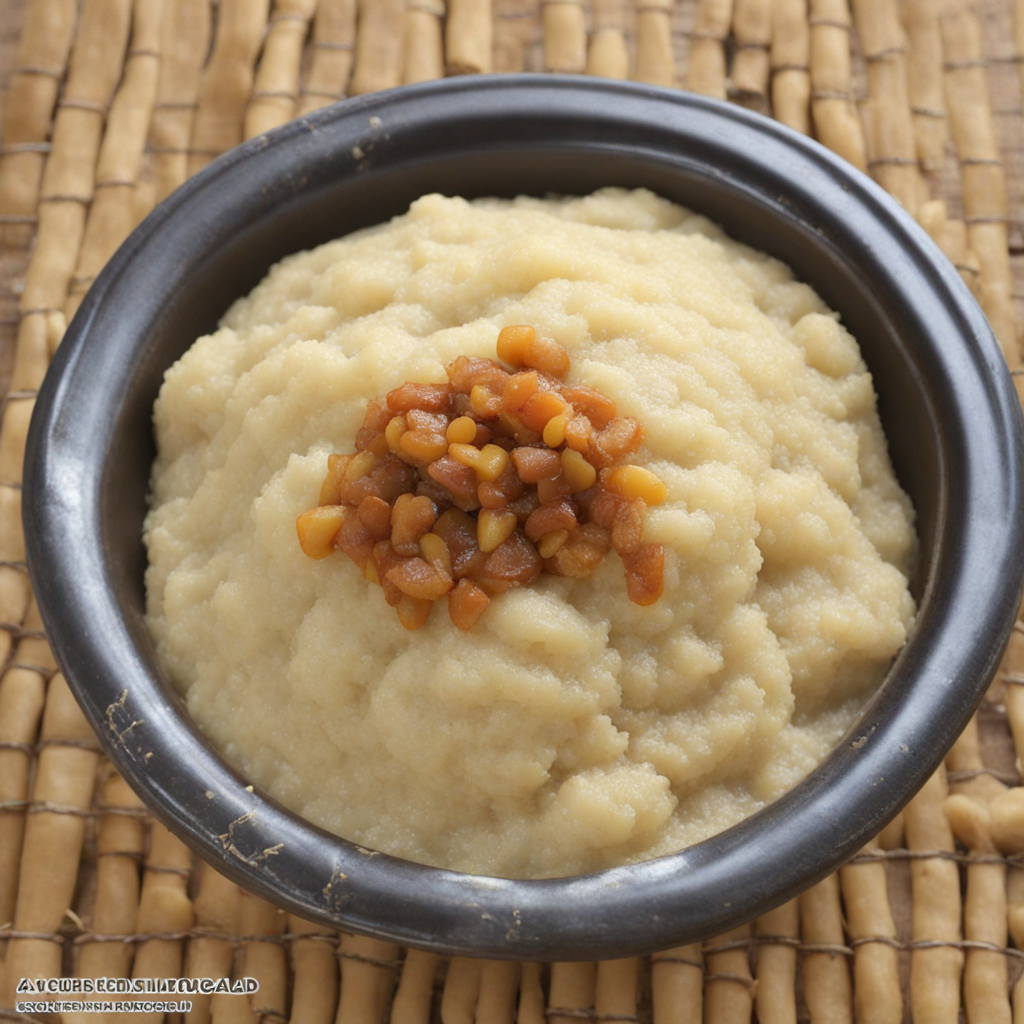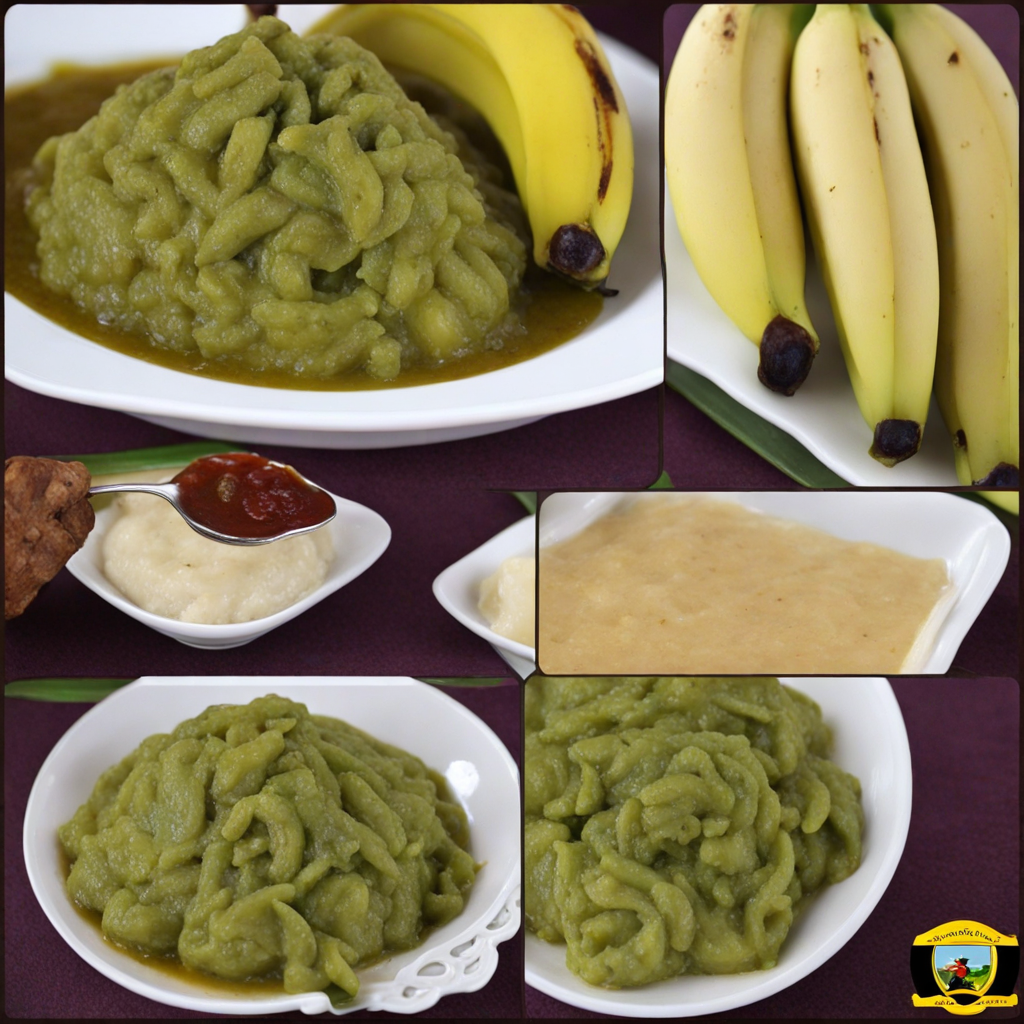Pilao
Pilao, a fragrant and flavorful dish from Uganda, is a delightful fusion of rice, spices, and a medley of vegetables or proteins. Traditionally cooked in a single pot, this dish is similar to the Indian biryani but has its unique Ugandan twist. The base of Pilao is typically made using long-grain rice, which is soaked and then sautéed with onions, garlic, and an array of spices such as cumin, cardamom, and cloves. These spices not only enhance the taste but also create an aromatic experience that entices the senses from the moment it is cooked. What sets Ugandan Pilao apart is the addition of local ingredients that reflect the rich agricultural landscape of the country. Often, it is accompanied by vegetables like carrots, peas, and bell peppers, or can be enriched with protein sources such as chicken, beef, or fish. The rice absorbs the flavors of the spices and the juices from the meat or vegetables, resulting in a mouthwatering dish that is both hearty and satisfying. The vibrant colors of the ingredients make Pilao visually appealing, enticing diners to indulge in this culinary masterpiece. Served hot, Pilao is perfect for gatherings and celebrations, often accompanied by a side of fresh salads or a spicy sauce to complement its flavors. The combination of textures—from the tender rice to the crunchy vegetables—creates a delightful eating experience. Whether enjoyed at a local eatery or made at home, Pilao is a must-try for anyone looking to explore the diverse and rich culinary landscape of Uganda, offering a taste that is both comforting and exotic.
How It Became This Dish
The History of Pilao in Uganda #### Origins Pilao, a fragrant and vibrant rice dish, finds its roots in the culinary traditions of the Indian subcontinent, particularly among Muslim communities. The term "Pilao" itself is derived from the Persian word “pilāv,” which refers to a method of cooking rice with spices and other ingredients. The dish made its way to East Africa through trade routes, cultural exchanges, and migration, particularly during the time of the Arab slave trade and later through the arrival of Indian laborers during the colonial era. In Uganda, Pilao has evolved into a beloved staple, particularly among the Muslim population, where it is often prepared for special occasions, celebrations, and communal gatherings. The dish is characterized by its aromatic spices, tender meat (often chicken or goat), and colorful vegetables, making it not only a source of sustenance but also a symbol of hospitality and communal identity. #### Cultural Significance Pilao holds a special place in Ugandan culture, transcending mere sustenance to embody shared experiences and social bonds. In many Ugandan households, the preparation and sharing of Pilao are integral to religious and cultural celebrations, including Eid al-Fitr and weddings. The dish represents not just a meal but an opportunity to gather family and friends, fostering connections and reinforcing community ties. In the Muslim community, Pilao is often served alongside traditional dishes such as kachumbari (a fresh tomato and onion salad) and various chutneys, which enhance the meal's flavor and complexity. The act of preparing Pilao can also be seen as a ritual in itself, with families passing down recipes and cooking techniques through generations, creating a sense of belonging and continuity. Moreover, Pilao is a dish that reflects Uganda's multicultural society. It serves as a bridge between various ethnic groups, allowing for the sharing of culinary techniques and ingredients. The integration of local Ugandan flavors, such as the use of matoke (plantain) or groundnuts, has further enriched the Pilao experience, making it distinctly Ugandan while retaining its historical roots. #### Development Over Time Over the years, Pilao has undergone significant transformations in Uganda, adapting to local tastes and available ingredients while remaining true to its origins. Early iterations of the dish were likely quite simple, focusing on rice, a few spices, and whatever protein was locally available. However, as trade and communication with other cultures increased, so too did the complexity of Pilao. During the colonial period, the introduction of new spices and cooking methods contributed to the evolution of Pilao. Ingredients like saffron, cardamom, cloves, and cinnamon became more accessible, allowing cooks to experiment with flavors. The dish began to take on various regional variations, with each community adding its unique touch. For instance, some variations might include a rich tomato sauce, while others may incorporate coconut milk for creaminess. In recent decades, globalization and the rise of culinary tourism have further influenced the preparation and presentation of Pilao in Uganda. Chefs and home cooks alike have embraced modern techniques, while still honoring traditional practices. Contemporary versions of Pilao may be served in upscale restaurants alongside inventive accompaniments, showcasing a fusion of flavors that reflect Uganda's dynamic culinary landscape. The proliferation of social media and food blogs has also played a role in popularizing Pilao beyond local communities. Recipes can now be shared globally, allowing individuals from various backgrounds to learn about and appreciate Ugandan cuisine. This exposure has led to a greater understanding of Pilao's cultural significance and has fostered a renewed interest in traditional cooking methods among younger generations. #### The Ingredients of Pilao The ingredients used in Pilao are a testament to its adaptability. The base of the dish is usually long-grain rice, often Basmati or Jasmine, chosen for their fragrant qualities. The cooking method typically involves sautéing onions, garlic, and ginger, followed by the addition of spices such as cumin, coriander, and bay leaves, which create a rich aroma that fills the kitchen. Meat, usually marinated in a blend of spices, is added to the rice, along with vegetables like peas, carrots, and bell peppers, providing both color and nutrition. The cooking process often involves layering the ingredients, allowing the flavors to meld together, and finishing with a sprinkle of fresh herbs like cilantro or mint for freshness. #### Pilao in Modern Uganda In contemporary Uganda, Pilao remains a cherished dish, emblematic of the country's rich culinary heritage. It is commonly served at family gatherings, communal feasts, and local celebrations, embodying the spirit of togetherness. The dish is often accompanied by stories of its origins, allowing families to connect with their history while enjoying a meal that has journeyed through time. Furthermore, Pilao has found a place in the burgeoning Ugandan street food scene, where vendors offer quick and delicious versions of the dish to passersby. This accessibility has contributed to its popularity, allowing even those unfamiliar with the dish to experience its flavors. As Uganda continues to embrace its multicultural identity, Pilao stands as a symbol of resilience and adaptability. It reminds us of the interconnectedness of food, culture, and community, showcasing how a simple dish can evolve and thrive while maintaining its essence. #### Conclusion The history of Pilao in Uganda is a rich tapestry woven from diverse cultural threads. From its origins in the Indian subcontinent to its status as a beloved Ugandan dish, Pilao reflects the complexities of migration, trade, and cultural exchange. It serves not only as a meal but as a vessel for storytelling, connection, and celebration. As we savor each mouthful of Pilao, we partake in a tradition that transcends borders and generations, reminding us of the power of food to bring people together and celebrate shared heritage. In the heart of Uganda, Pilao continues to flourish, embodying the spirit of community, hospitality, and the enduring legacy of culinary traditions.
You may like
Discover local flavors from Uganda







